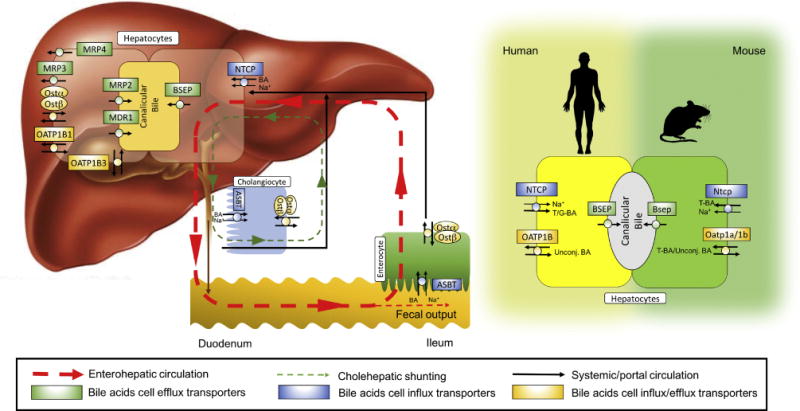Figure 3. Enterohepatic circulation of bile acids showing the major transport proteins.

(Left panel) After their synthesis, conjugated monovalent bile acids are secreted into bile canaliculi by the bile salt export pump (BSEP), whereas modified (sulfated, glucuronidated and polyhydroxylated) bile acids can be secreted by the canalicular transporters, MRP2 and MDR1. Alternatively, monovalent or modified bile acids can be effluxed across the basolateral (sinusoidal) membrane of the hepatocyte by OSTα-OSTβ, MRP3, MRP4, and possibly other transporters as a mechanism to protect the hepatocytes from bile acid overload. A fraction of the bile acids secreted into bile undergo “Cholehepatic Shunting” (green dotted line), whereby the bile acids are prematurely absorbed in the biliary tract and returned directly to the liver. Unconjugated bile acids or bile acid analogs such as norUDCA undergo passive absorption, whereas conjugated bile acids can be absorbed by cholangiocytes via the ASBT and exported by OSTα-OSTβ for return to the hepatocyte in the periductular circulation. Ultimately, the bile acids secreted into bile move through the biliary tract, empty into the intestinal lumen, and are passively absorbed along the length of the intestine and actively absorbed in the ileum. The bile acids are then carried back to the liver in the portal circulation for hepatocellular reuptake and resecretion into bile (red dotted line). (Right panel) The transporters that maintain the enterohepatic circulation of bile acids are largely conserved between humans in mice. In mice but not humans, members of the Oatp family appear to play an important secondary role in hepatic uptake of conjugated bile acids.
